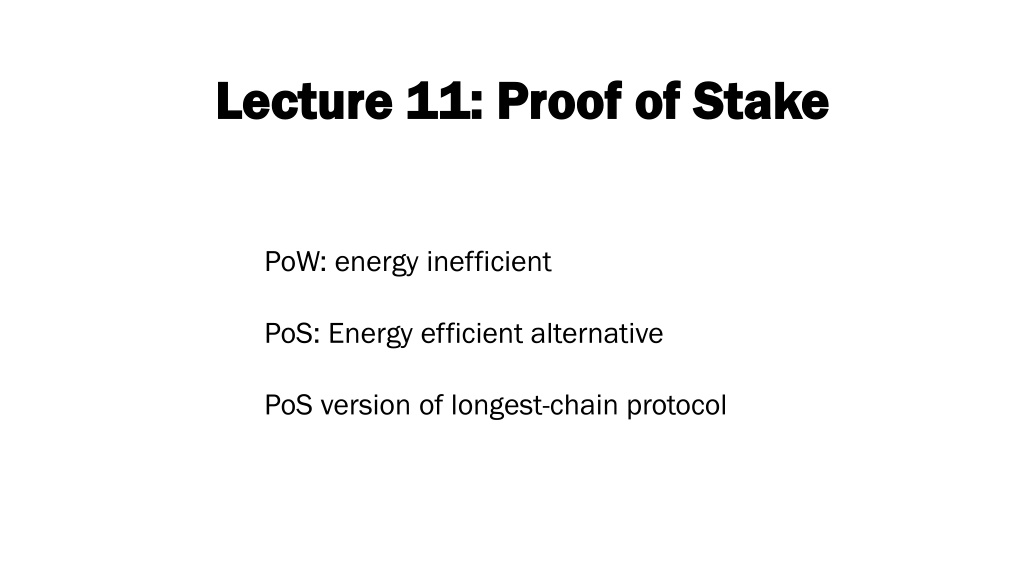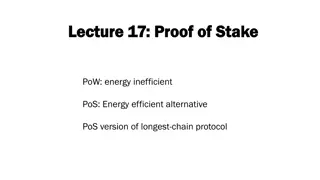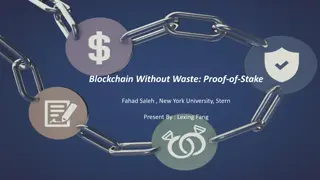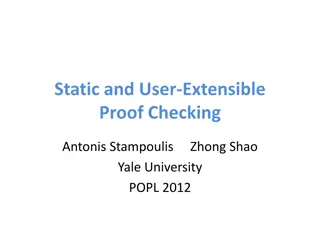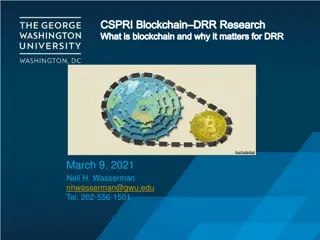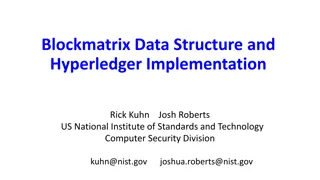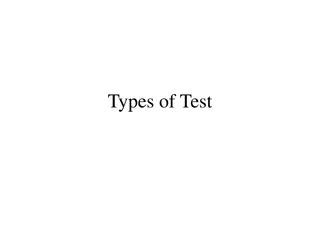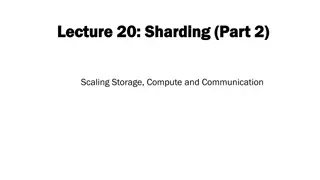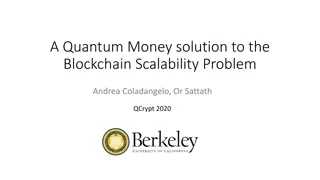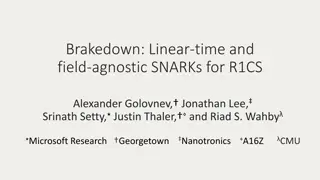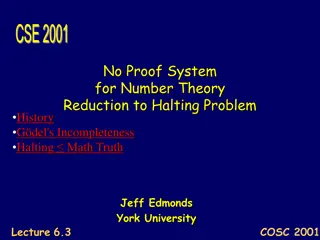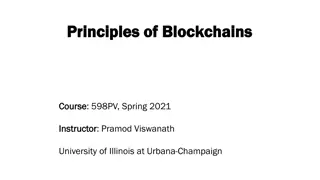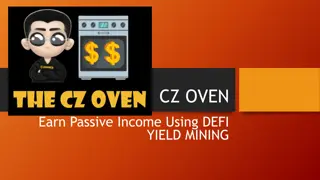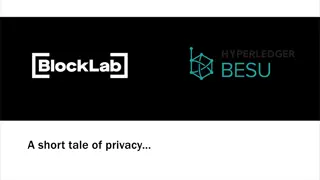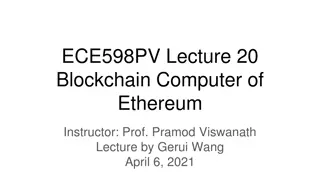Understanding Proof of Stake in Blockchain Technology
This lecture delves into the concept of Proof of Stake (PoS) as an energy-efficient alternative to Proof of Work (PoW) in blockchain protocols. It explores how PoS allows meaningful participation based on the stake individuals hold, replacing the need for energy-intensive mining. The lecture discusses vulnerabilities like the Nothing at Stake (NaS) attack and grinding attacks, highlighting the benefits and challenges of implementing PoS within the longest-chain protocol.
Download Presentation

Please find below an Image/Link to download the presentation.
The content on the website is provided AS IS for your information and personal use only. It may not be sold, licensed, or shared on other websites without obtaining consent from the author. Download presentation by click this link. If you encounter any issues during the download, it is possible that the publisher has removed the file from their server.
E N D
Presentation Transcript
Lecture 1 Lecture 11 1: Proof of Stake : Proof of Stake PoW: energy inefficient PoS: Energy efficient alternative PoS version of longest-chain protocol
This lecture This lecture Proof of Stake (PoS) energy efficient alternative replacement to PoW Simple way to implement PoS within the longest chain protocol Vulnerabilities nothing at stake (NaS) attack grinding attack
Proof of Work Proof of Work Find nonce such that H(hash(parent.header), Merkle root of tx, nonce) < threshold Finding entails work Nonce is the proof Doing this work allows miners to participate meaningfully in the protocol PoW is a Sybile resistant leader election mechanism
Proof of Stake Proof of Stake Allow meaningful participation based on stake block proposers own coins Level of participation proportional to stake higher probability of being a proposer Doing work is replaced by owning coins energy efficient capital efficient -- no need for mining hardware
Idea 1 Idea 1 PoS attempt 1 H(hash(parent.header), Merkle root of tx, public key) < threshold x stake Problem: Grinding can try different set of tx such that Merkle root of tx works out correctly so probability not purely proportional to stake
Idea 2 Idea 2 PoS attempt 2 H(hash(parent.header), public key) < threshold x stake Problem: Liveness just one trial to form a block unlike PoW where nonce can be tried at will
Idea 3 Idea 3 PoS attempt 3 H(hash(parent.header), timestamp, public key) < threshold x stake
Idea 3 Idea 3 PoS attempt 3 H(hash(parent.header), timestamp, public key) < threshold x stake Problem: 1. Block content is not tamper-resistant against an adaptive adversary 2. Public election: vulnerable to bribery/corruption
Crypto Primitive Crypto Primitive Key-Evolving Signatures (KES) are signature schemes, where: pk remains the same sk updated in every step, old sk erased impossible to forge old signatures with new keys used for signing blocks helps achieve adaptive security
Crypto Primitive Crypto Primitive Verifiable Random Function (VRF) VRF( sk , x ) ( y , ? ) Verify( pk , x , y , ?) True/False Public election private election
Idea 4 Idea 4 PoS attempt 4 VRF(hash(parent.header), timestamp, secret key) < threshold x stake
Nothing at Stake Nothing at Stake VRF(hash(parent.header), timestamp, secret key) < threshold x stake Longest chain rule parent is tip of longest chain Adversary deviates can grow on all blocks (even Genesis) No computation limit to deviation unlike PoW Nothing at Stake (NaS)
NaS NaS Tree Tree Honest participants grow chain as a Poisson process growth rate linear in time Adversary grows a tree of blocks number of blocks grows exponentially in time NaS allows adversary to compete with honest participants unevenly
NaS Tree and Longest Chain Longest chain NaS Tree G ???? A scalable PoS blockchain in the open setting, Fan and Zhou, 2016
Security of Security of PoS PoS Longest Chain Longest Chain Honest participants grow chain as a Poisson process growth rate linear in time (1 ?)?? Adversary grows a NaS tree in private longest chain length ???? Security against Private attack 1 ? > ???? or ? < 1 1+? 27%
Security Security Security against Private attack Secure against all attacks
Boosting Security Threshold Boosting Security Threshold Security against all attacks Key idea: Reduce the number of randomness sources Idea 1: Only use randomness from genesis block VRF(hash(Genesis), timestamp, secret key) < threshold x stake
Ouroboros Ouroboros Praos Praos G ?0 Epoch 1 ?1
Ouroboros Ouroboros Praos Praos Epoch 2 5 days Repeat ?2 St tz, Rainer, et al. "Stake Shift in Major Cryptocurrencies: An Empirical Study." arXiv preprint arXiv:2001.04187 (2020).
Ouroboros Ouroboros Praos Praos : Bribery Attack : Bribery Attack G ?0 Epoch 1 Bribe k+1 bribes for k-deep rule
Boosting Security Threshold Boosting Security Threshold Security against all attacks Key idea: Reduce the number of randomness sources Idea 2: c-correlation
c c- -correlation correlation Update the randomness of a block only at blocks with height multiples of c
Analysis of private NaS Analysis of private NaS Godfather-block: height(b)%c=0 Only fork at the parents of godfather-blocks ?c=1/(1+?c): threshold for private NaS attack
Dynamic stake Dynamic stake Flaw of static stake Prevent nodes from leaving and joining A coin with no actual stake can participate forever What if stake is updated immediately? Grinding attack: once the adversary is elected as a leader at round i, it can include transactions at round i to transfer all stake to a coin that has a higher chance of winning the election at round i + 1 What if stake is updated with a delay of s blocks? Long range attack: have a private chain with s blocks
s s- -truncation truncation Stake is updated with a delay of s blocks Chain rule: When comparing two chains, both chains are truncated up to s blocks after the fork. Whichever truncated chain is mined in shorter time (and hence denser) is chosen to be mined on.
Dynamic availability Dynamic availability
Crypto Primitive Crypto Primitive Verifiable Delay Function (VRF) VDF( sk , x ) ( y , ? ) Takes L steps Verify( pk , x , y , ?) True/False Takes much less than L steps Proof of sequential work
PoSAT PoSAT: : PoS PoS with arrow with arrow- -of of- -time time
